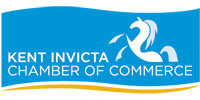Moving premises can be highly disruptive. It's important to plan the move so you can resume work with a minimum of fuss and time lost. Here's what to consider
- Start planning well in advance - at least six months before the move if possible. Plan to move during a quiet period with no other major disruptions.
- Create a small move team, with a nominated move co-ordinator in charge who can delegate specific tasks to other team members.
- Create a business-as-usual team to maintain customer service and key operations during the move. Make contingency plans in case of unexpected problems.
- Involve a removal contractor from an early stage and confirm exactly what they will do; check that they have suitable insurance.
- Arrange any specialist help needed for relocating and reconfiguring IT and telecoms systems (and any other complex equipment).
- Prepare an outline programme to control the move and identify the lead time for each task, set target completion dates, and allocate responsibility.
- Progress and complete legal transactions to dispose of the old premises, make any reparations and acquire the new premises; arrange any permissions required.
- Give suppliers, customers, the authorities and other contacts advance notice of your change of address; use it as a marketing opportunity.
- Organise updated stationery and marketing materials. Don't forget to update your website too.
- Arrange to transfer and terminate services and utilities, including phone lines and broadband. Redirect mail and phone calls. If necessary, arrange new local suppliers.
- Notify your insurers of the move to ensure continuity of cover.
- Prepare a detailed plan of your new premises; arrange any alterations, cabling, decoration and so on.
- Label everything to be moved, with a code showing where it will go in the new premises; clear out and dispose of unnecessary clutter.
- Involve, consult and update employees throughout the moving phase. Consider how any relocation will affect them and what their contractual rights are.
- Keep a back-up of your IT system and a copy of the contact details for all suppliers, customers and employees in case of any problems in getting your system back up and running.
